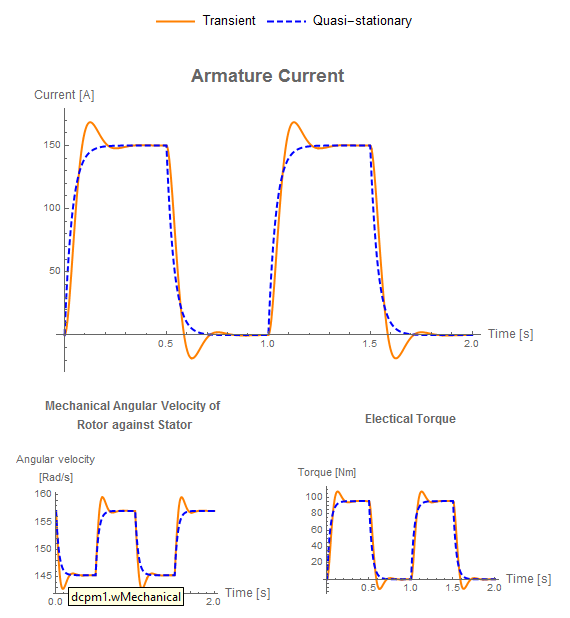比較:過渡DCPMモーターと準定常DCPMモーター
システムモデルの開発において重要なステップとなるのは,モデル忠実度の適切なレベルを決定することです.多くの場合,このような決定はモデルの確度(つまり,モデルが現実世界のシステムの動作をどの程度正確に記述できるか)とシミュレーションの速度およびパフォーマンスとの間のトレードオフになります.ここでは,直流永久磁石(DCPM)モーターの高速(準定常)モデルが,完全に過渡的なモデルと比較してどのように異なる動作をするかを調べます.
比較モデル
このモデルはModelica標準ライブラリのコンポーネントを使って構築されています.モーターモデルはModelica.Electrical.Machinesサブライブラリにあります.

モデルのダイアグラム.両方のモーターが無負荷速度で始動し,その後それぞれのシャフトにトルクパルスが適用される.
シミュレーション結果
電気回路の準定常解析では,既知の周波数,振幅,位相シフトを持つ複素フェーザ,つまり正弦波励起を適用します.過渡解析で考慮されるすべての動的過渡現象は無視されます.この動作はモデルのシミュレーション結果で確認できます.

上のプロットは2つのモーターの電機子電流を示し,下のプロットはステータに対するローターの電気トルクと角速度を示している.これらのプロットから明らかなように,準定常モデルには過渡的影響は全くない.
Wolfram System Modeler
評価版
ご購入
System ModelerはWindows,macOS,
Linuxで日本語と英語でご利用になれます »
ご質問やコメントはWolframエキスパートまでお寄せください »